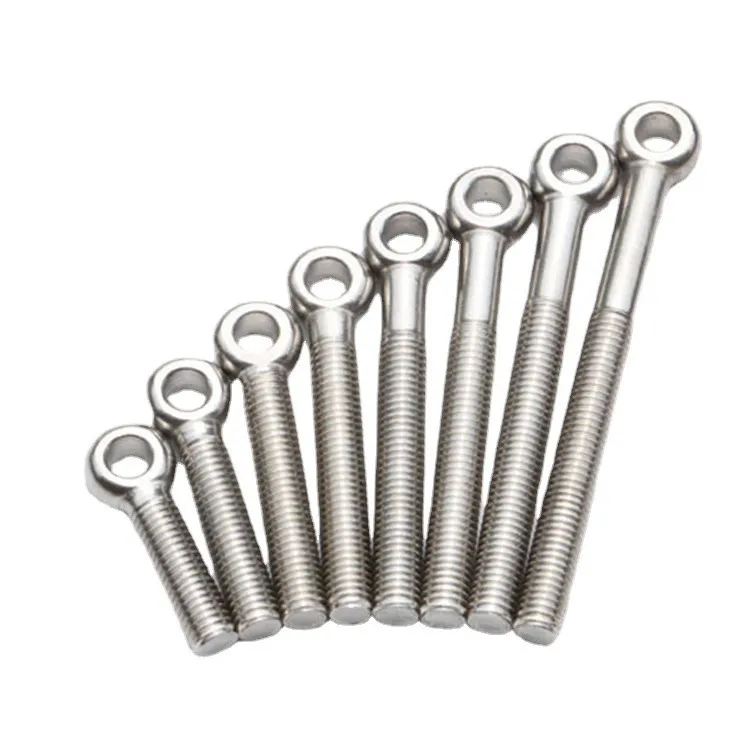

Understanding ASTM A325 Anchor Bolts for Structural Applications and Their Specifications
Aug . 18, 2024 16:10 Back to list
Understanding ASTM A325 Anchor Bolts for Structural Applications and Their Specifications
Understanding Anchor Bolts A Deep Dive into ASTM A325
Anchor bolts serve a crucial function in construction and engineering, acting as a critical connection point between structural components and foundations. Among the various standards governing the manufacturing and performance of these bolts, ASTM A325 stands out as a benchmark for structural steel fasteners.
What is ASTM A325?
ASTM A325 is a specification developed by the American Society for Testing and Materials (ASTM) that outlines the requirements for structural bolts used in steel constructions. Specifically, it covers heat-treated carbon steel bolts that are used for bolted connections in structures. These bolts are primarily designed for high-strength applications, making them indispensable in bridges, buildings, and other heavy-duty applications.
Properties of ASTM A325 Bolts
The standard specifies several critical properties that define the performance and applicability of A325 bolts. First and foremost, A325 bolts are available in two types Type 1 and Type 2. Type 1 is made from carbon steel, while Type 2 is produced from alloy steel. The tensile strength of A325 bolts is substantial, typically ranging from 120 to 150 ksi (kilo-pound per square inch), making them suitable for load-bearing applications.
In addition to tensile strength, ASTM A325 bolts also exhibit excellent ductility and toughness. These properties are essential, especially in seismic regions where structural integrity must be maintained under dynamic loads. The standard also emphasizes a minimum yield strength, ensuring that the bolts can withstand heavy loads without deforming.
Manufacturing Process
anchor bolt astm a325

The manufacturing of A325 bolts involves several critical steps to ensure quality and adherence to standards. The process begins with selecting high-quality steel, followed by heat treatment to enhance strength. This heat treatment process, which often includes quenching and tempering, plays a vital role in achieving the necessary mechanical properties.
After manufacturing, A325 bolts undergo rigorous testing to ensure they meet the requirements outlined in the ASTM A325 specification. This testing includes verifying dimensions, checking tensile strength, and conducting hardness tests. Only after passing these stringent evaluations will the bolts be marked and approved for use in construction projects.
Applications of ASTM A325 Bolts
Due to their high strength and reliability, A325 bolts are widely used in various construction applications. They are particularly common in structural steel frameworks, where they help fasten beams, columns, and braces. A325 bolts are also employed in pre-engineered structures, bridges, and even in the assembly of large machinery.
Importance of Proper Installation
Even with their high strength, the effectiveness of A325 bolts largely depends on proper installation techniques. The installation process must ensure that the bolts are tightened to the specified tension to prevent loosening over time. Additionally, factors such as joint design, surface conditions, and the presence of coatings should be taken into account to optimize performance.
Conclusion
In essence, ASTM A325 defines a standard that is not just about bolts but is fundamentally about ensuring safety, reliability, and durability in structural applications. As the backbone of numerous construction projects, these high-strength bolts provide the essential connections that hold our buildings and infrastructure together. Understanding their properties, manufacturing processes, and appropriate usage is crucial for engineers and builders alike. By adhering to the guidelines set by ASTM A325, we can enhance the safety and longevity of our structures, ensuring they remain robust for years to come.
Latest news
-
High-Strength Hot-Dip Galvanized Bolts-Hebei Longze|Corrosion Resistance&High Strength
NewsJul.30,2025
-
Hot Dip Galvanized Bolts-Hebei Longze|Corrosion Resistance&High Strength
NewsJul.30,2025
-
Hot Dip Galvanized Bolts - Hebei Longze | Corrosion Resistance, High Strength
NewsJul.30,2025
-
High-Strength Hot Dip Galvanized Bolts-Hebei Longze|Corrosion Resistance, Grade 8.8
NewsJul.30,2025
-
Hot Dip Galvanized Bolts-Hebei Longze|Corrosion Resistance,High Strength
NewsJul.29,2025
-
High-Strength Hot Dip Galvanized Bolts - Hebei Longze Metal Products Manufacturing Co., Ltd.|corrosion resistance&high strength
NewsJul.29,2025

